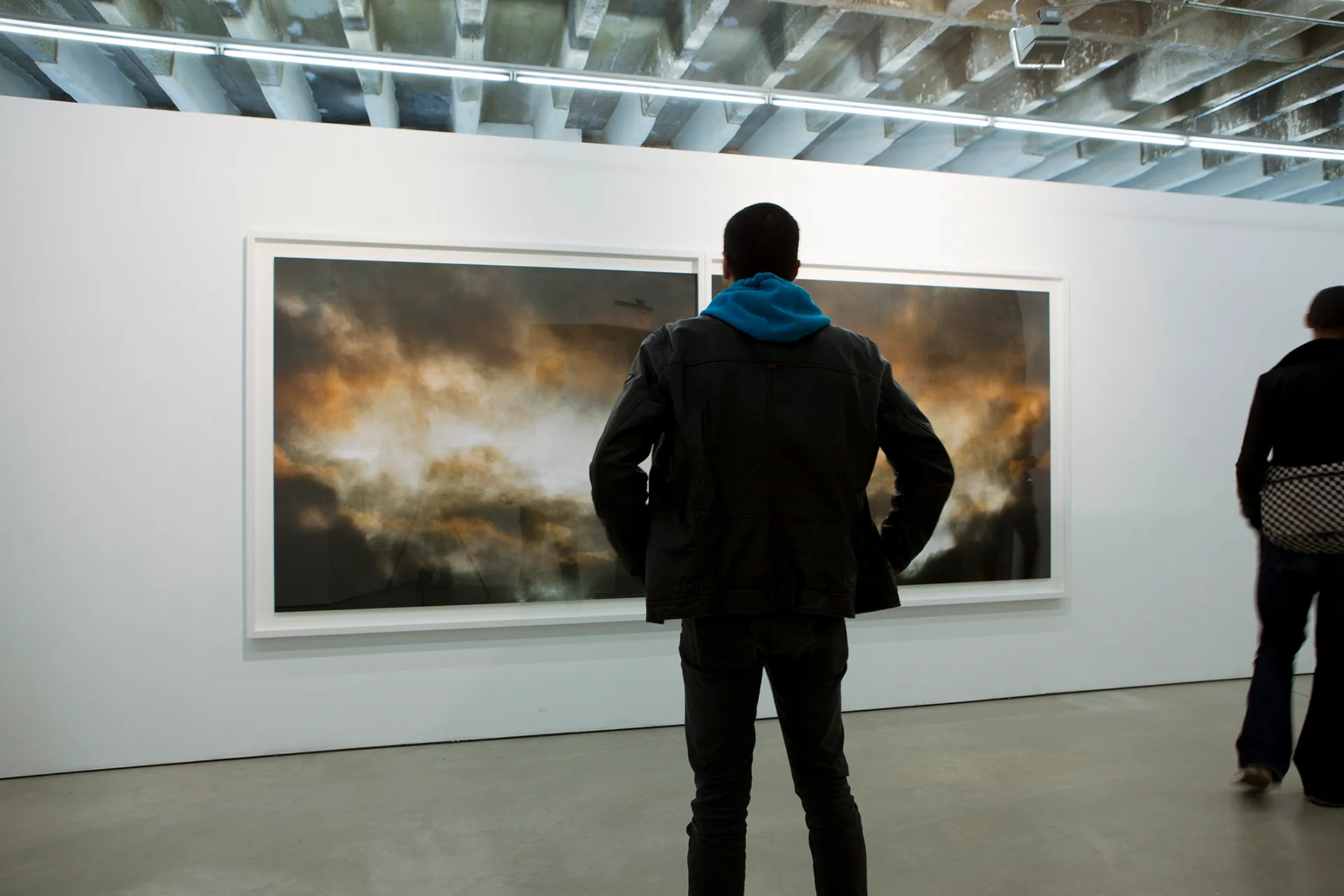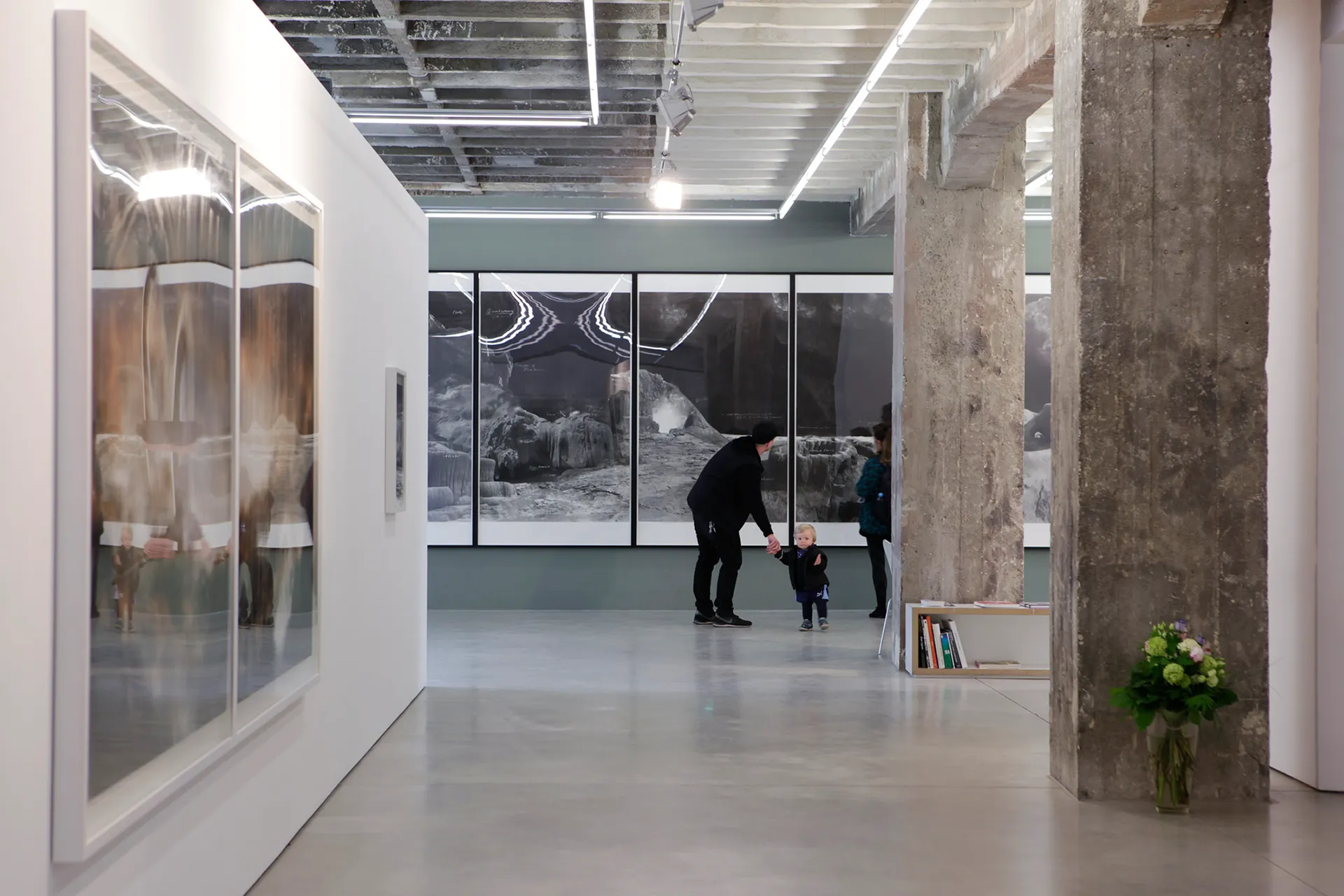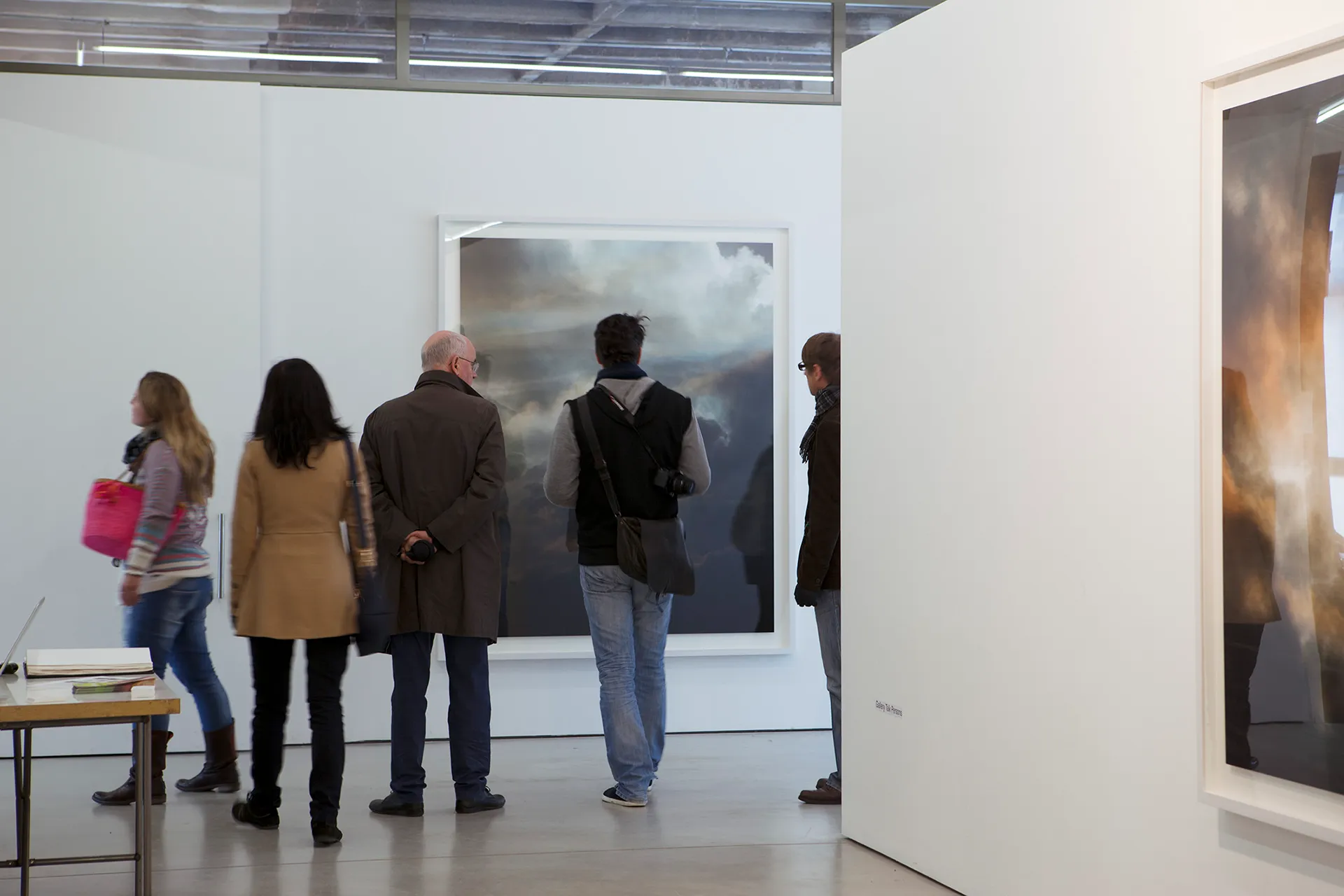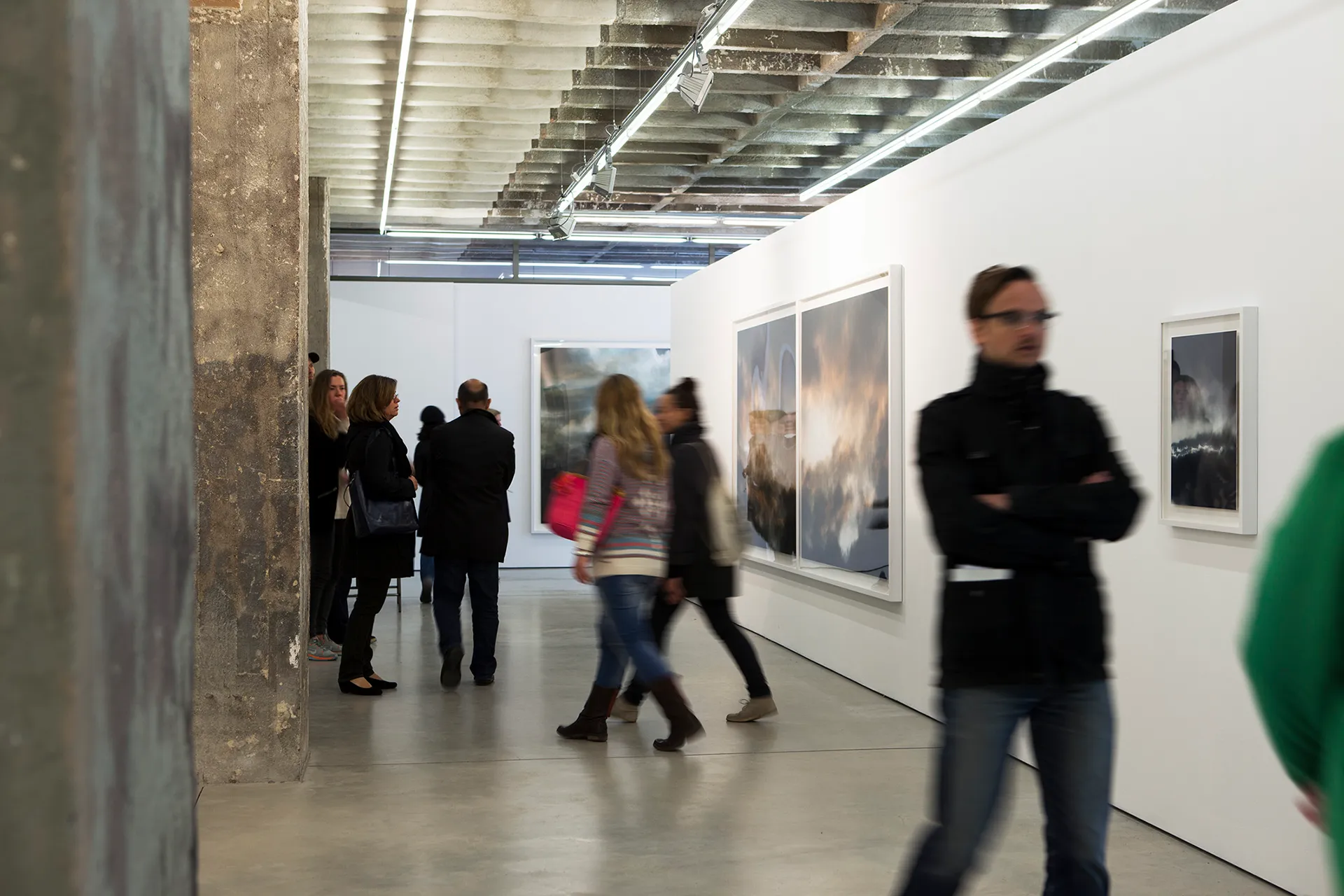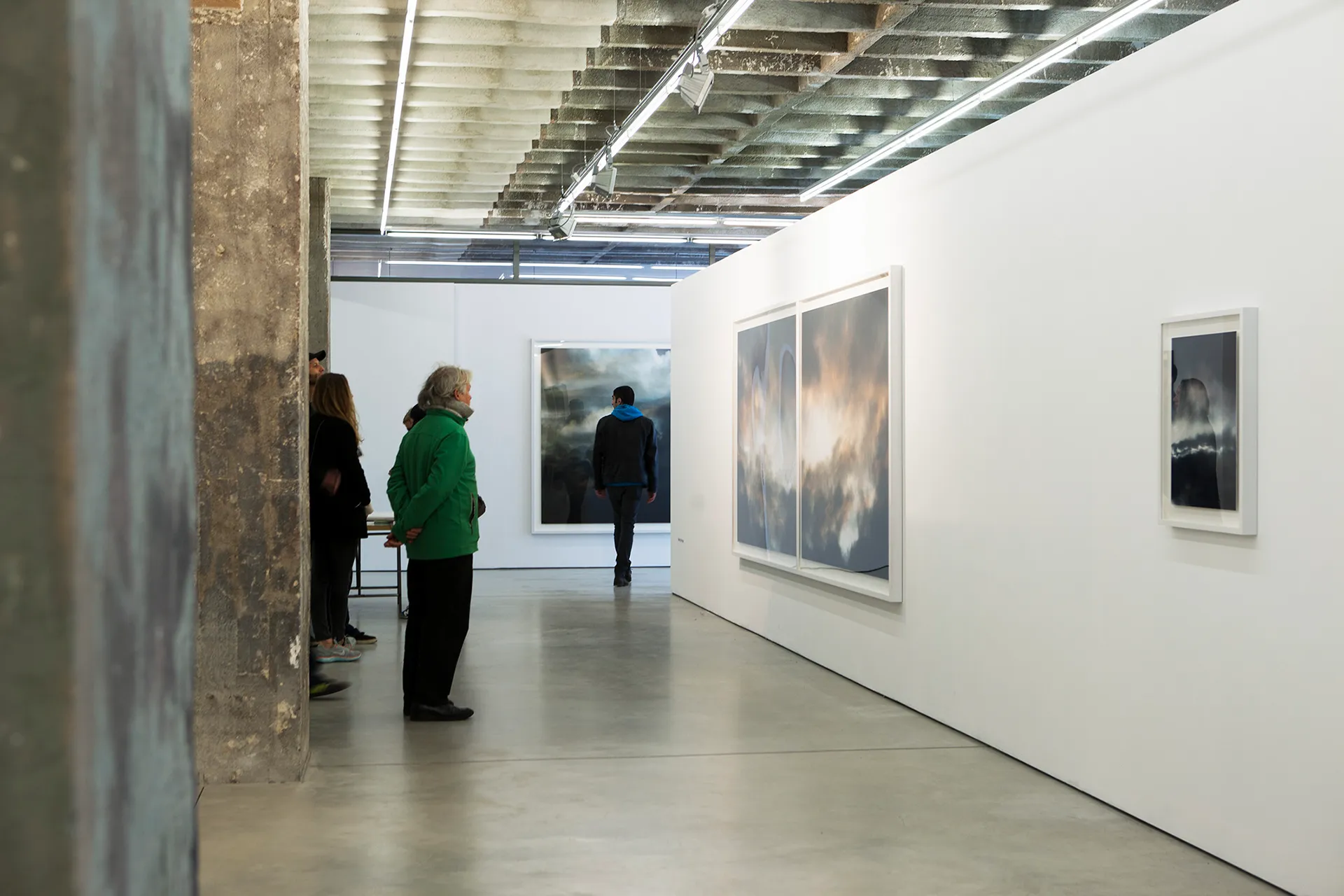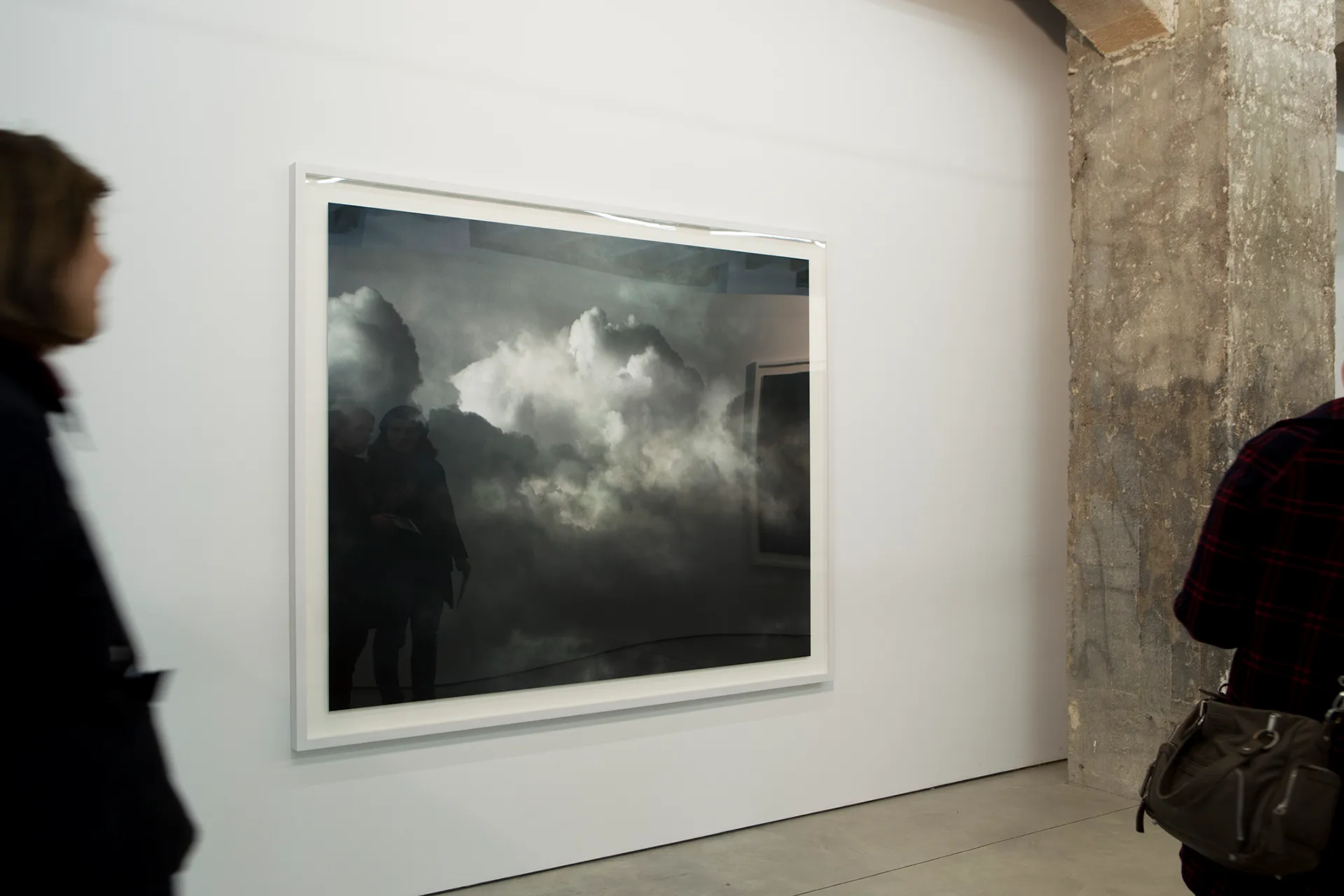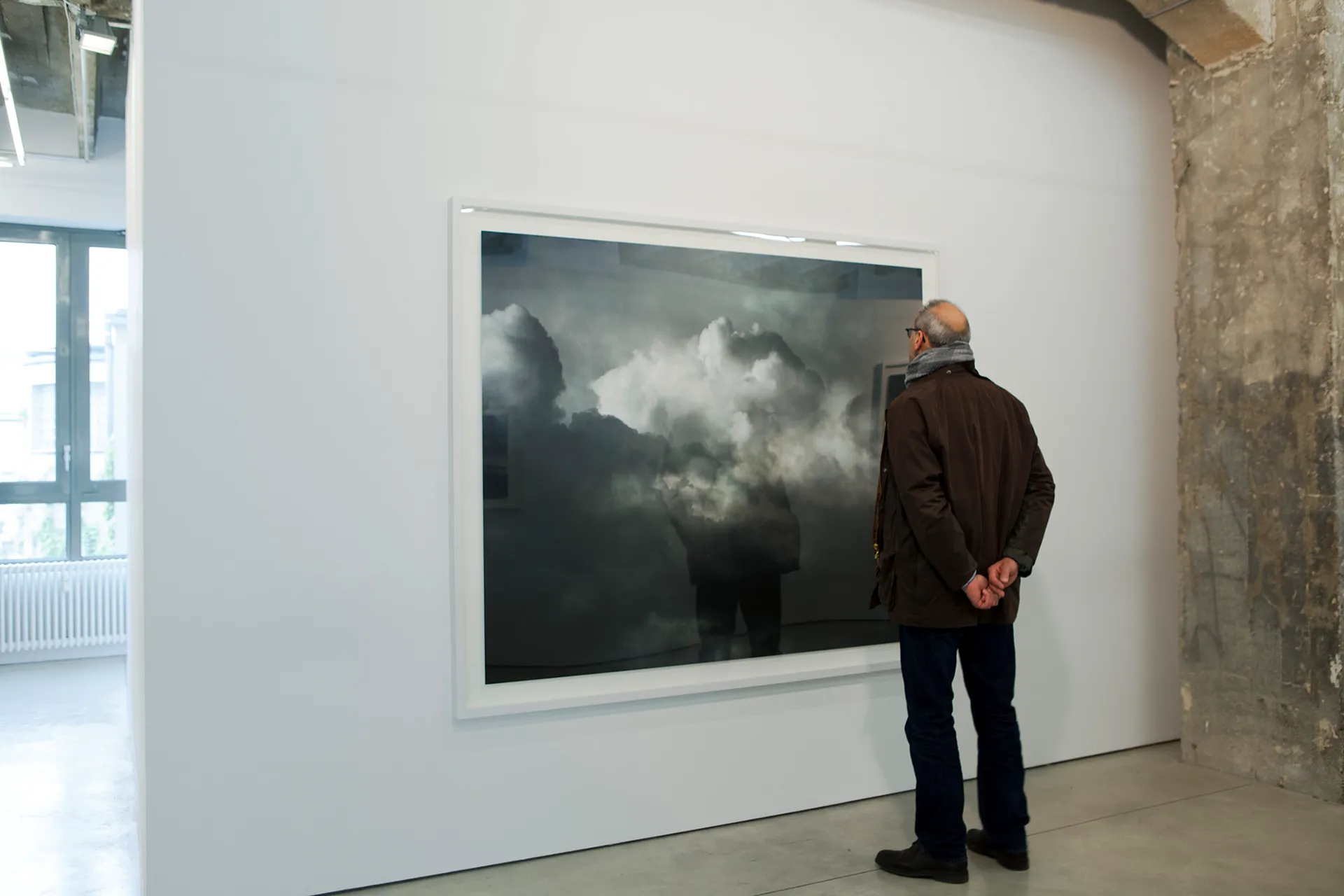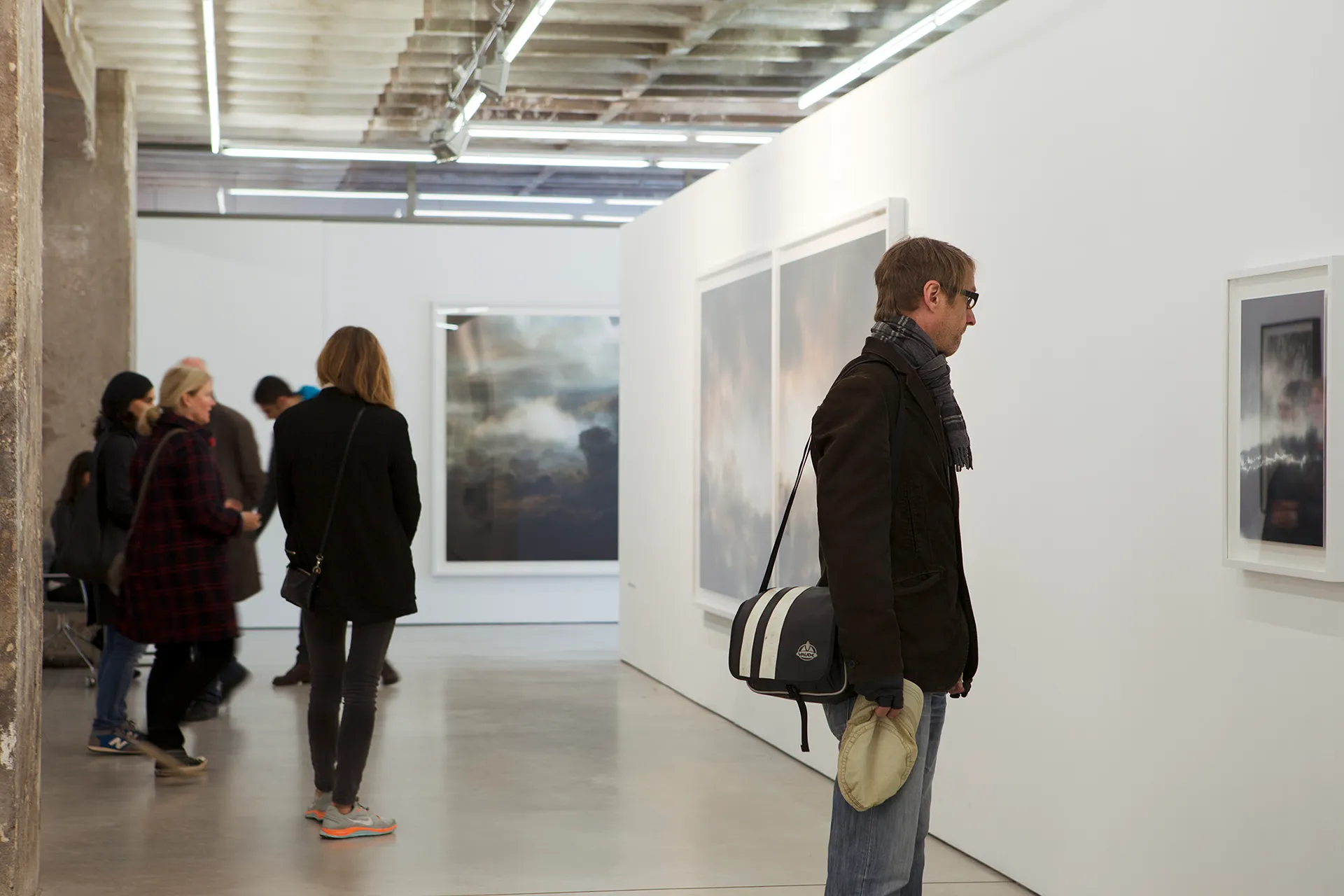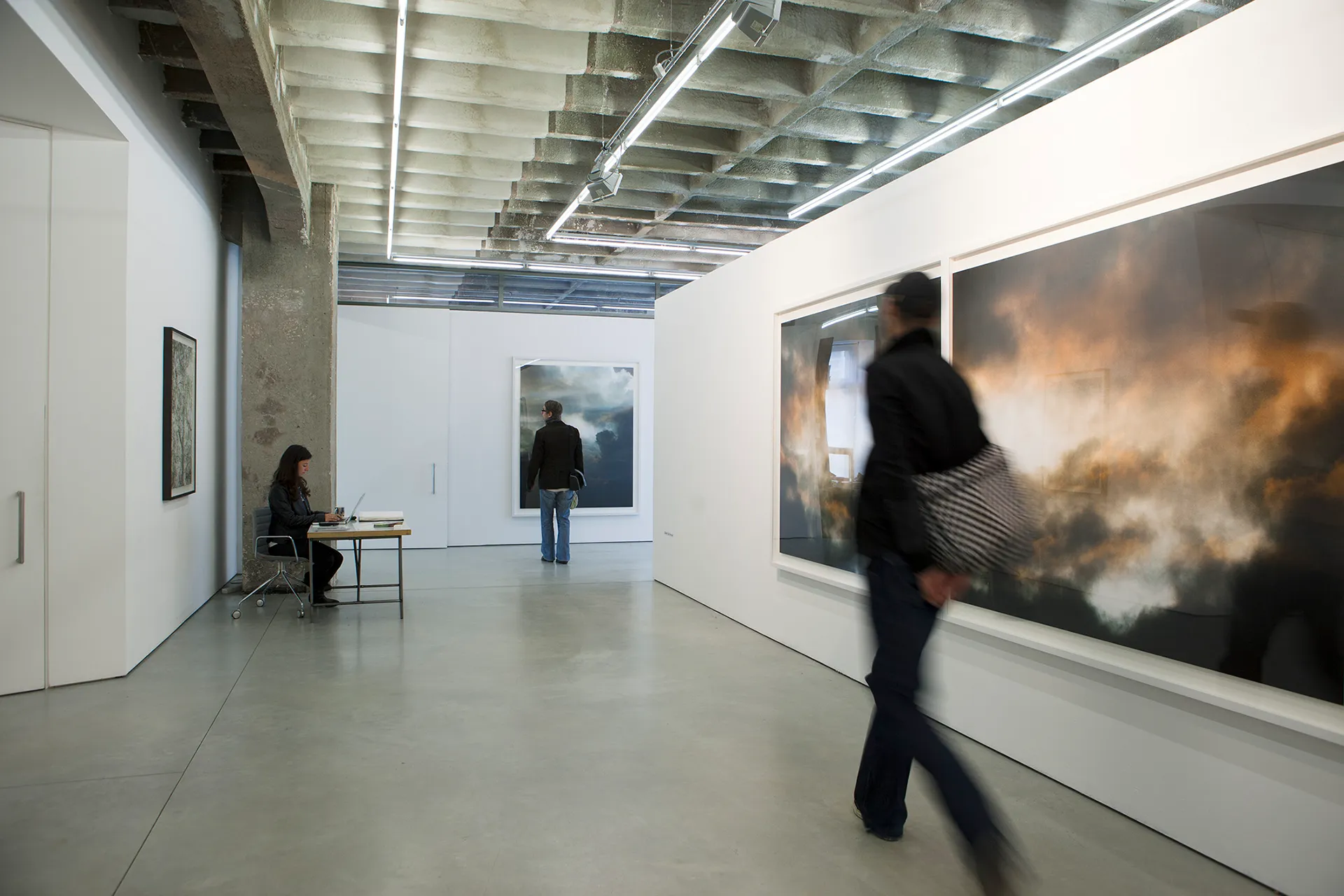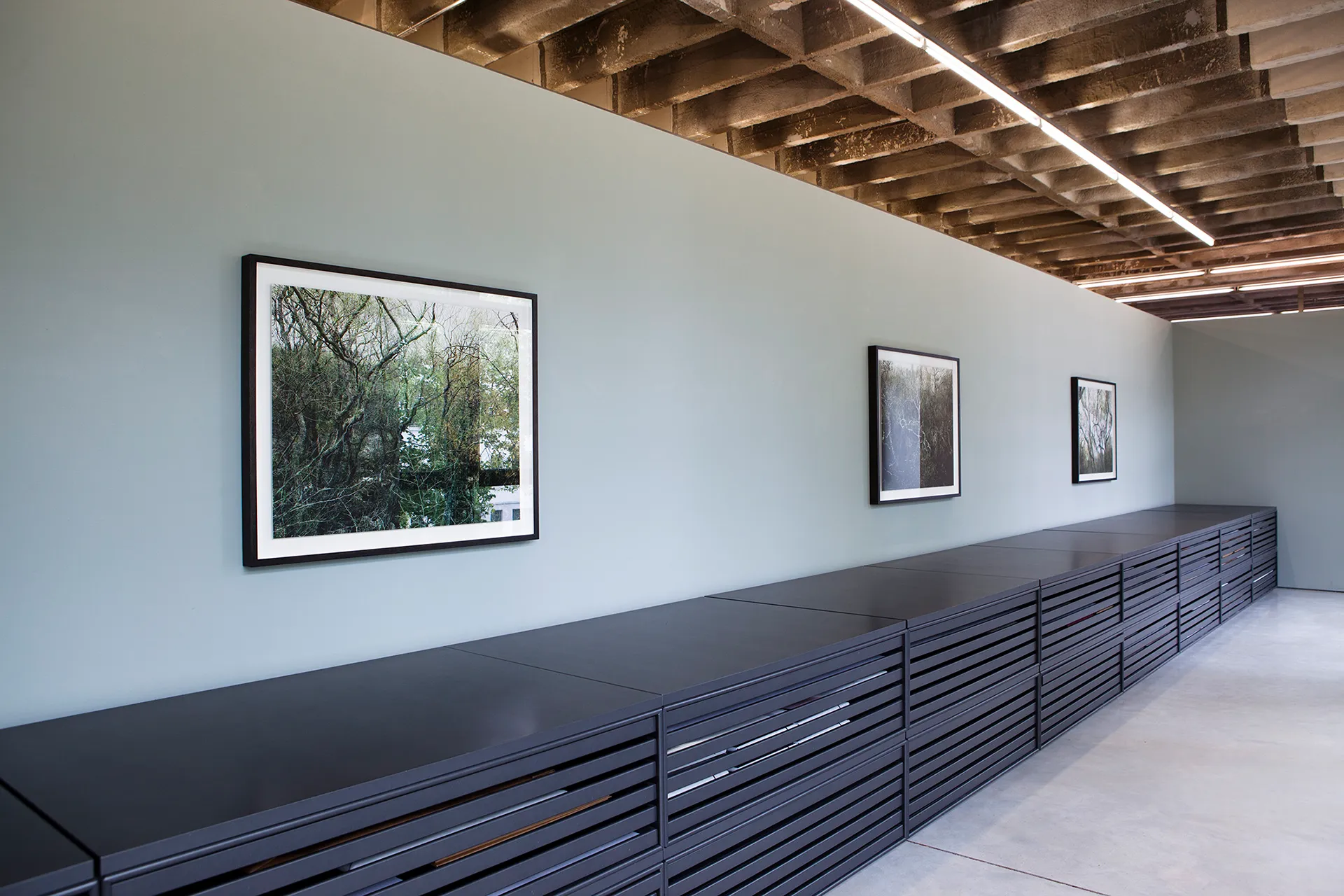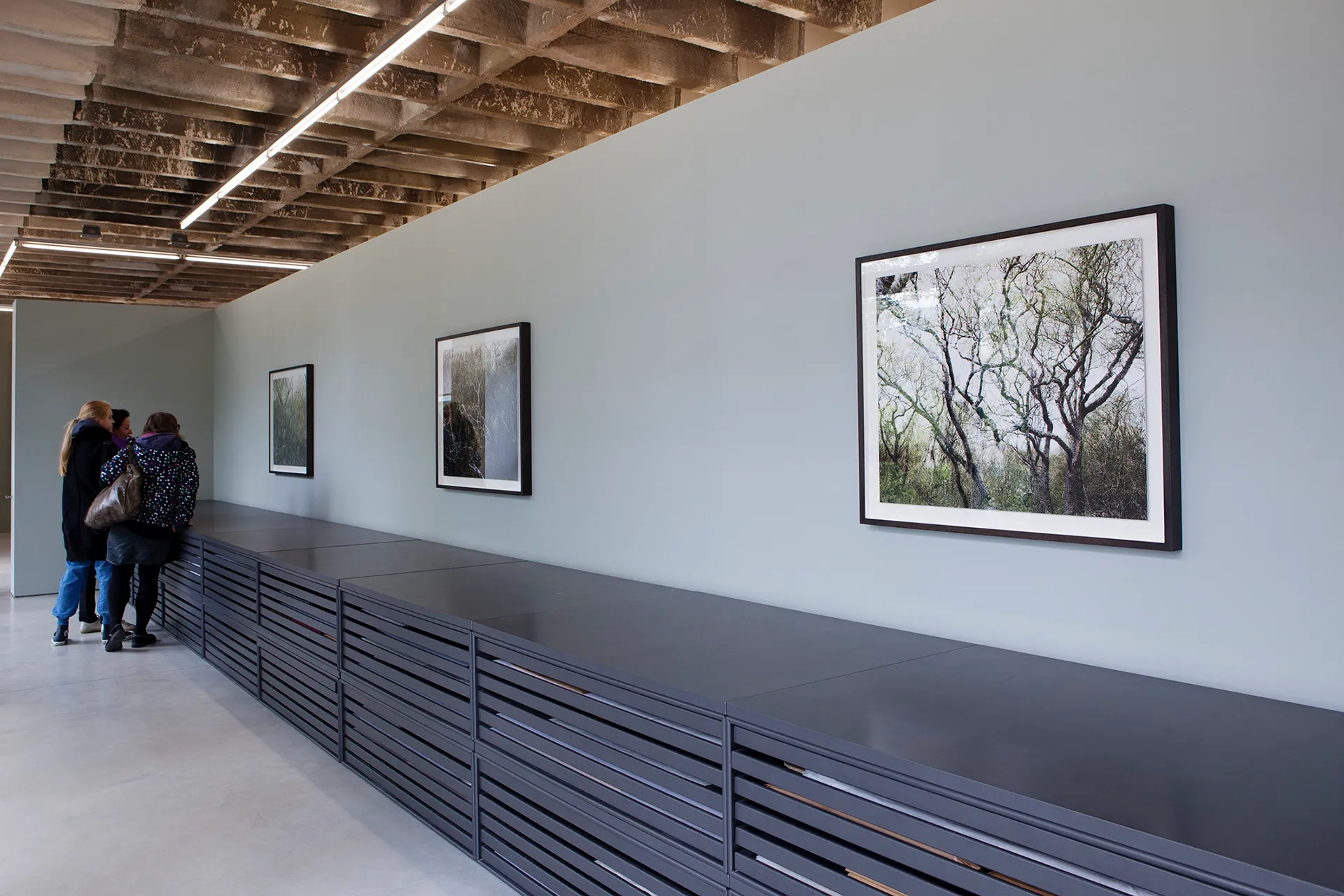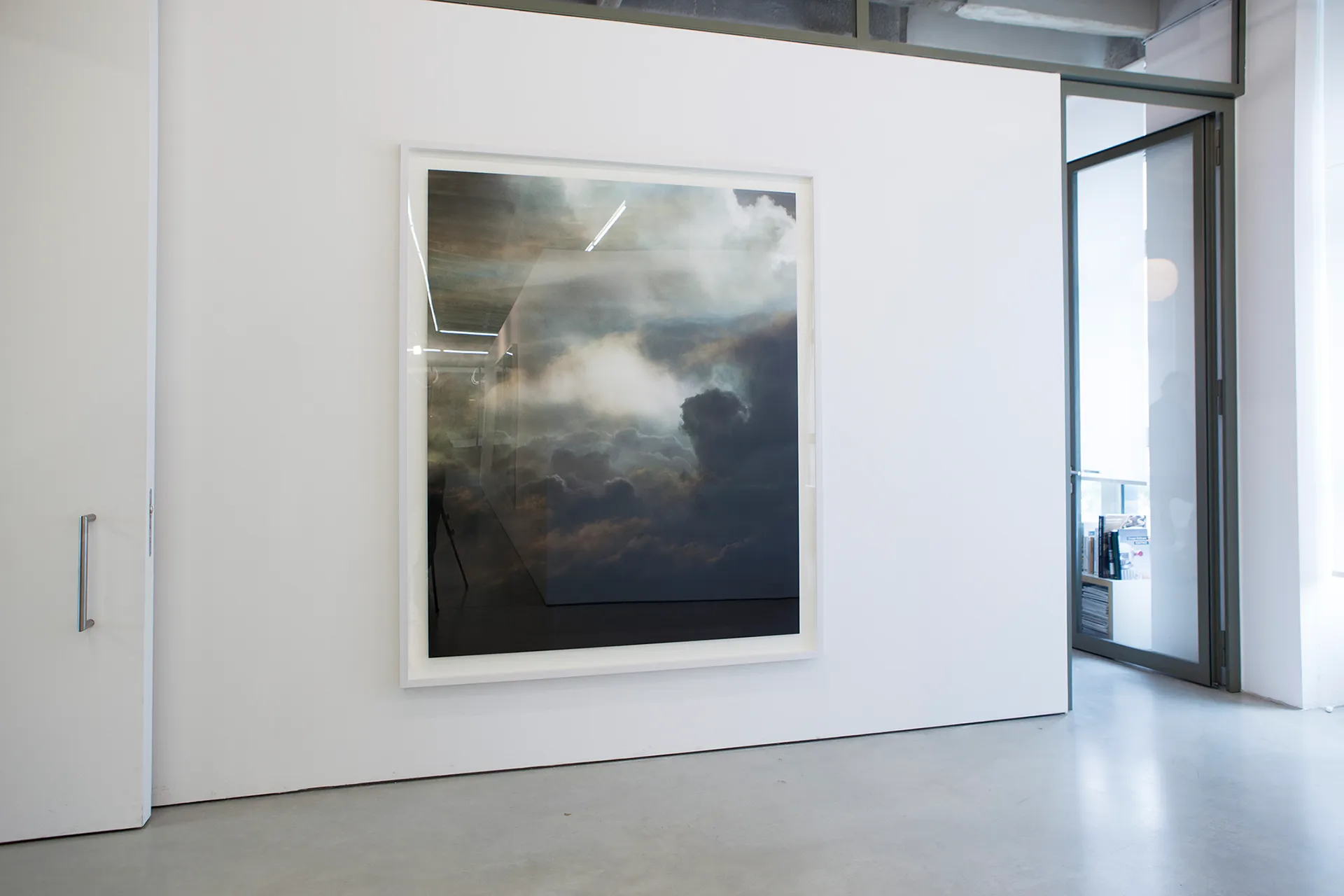Time Present and Time Past
Gallery Taik Persons, Berlin
28.02.2009 – 17.05.2009
Opening: Friday, May 2, 2014, 6 – 9 pm
Exhibition: May 3 – June 21, 2014
Gallery Taik Persons is thrilled to present Santeri Tuori’s first solo exhibition in Berlin. The show exhibits photographs from the series Sky Prints (2011– 12/2014), as well as a video from the Forest series (2009).
Santeri Tuori is one of Finland’s leading contemporary visual artists. As an exponent of the Helsinki School, he has become well known for his innovations in merging the media of photography and video art. The combination of still and moving images in Tuori’s works weaves together multiply layered com- positions that present more than the mere sum of their productive parts. While the subjects of his series have various origins in classical genres of human portraiture (e.g. Bogeyman [2001/2004], 35 Minute Smile [2002], Karlotta [2003/2004]), traditions of landscape painting (as with the works now on display), or in more abstracted, minimalist depictions of nature and natural environment (e.g. Sea [2004], Waterfall [2006]), all have in common that space is never organized according to the straightforward linear logic of temporal order and movement habitual to our practices of seeing – not only in viewing nature, but also art.
In Tuori’s Sky Prints, for example, our gaze is directed towards the autonomous theme of the sky, which is unframed from its usual context of the ‘total landscape’.Tuori’s video works consist of single photographs and moving image segments of the same landscape motif. Both sets of images are superimposed onto one another. The final video sequence is projected onto a photographic print; sometimes this is done via rear-screen projection, so that the technical devices remain invisible to the viewer, effectuating the photographic still to ‘awaken’ to life through the motion of the videotape. In another method, the still photograph is vice versa incorporated into the moving image with an editing program; both are combined in a single video file. Aspects of technical and creative production go hand in hand with each other, Tuori explains: “My works evolve very much with the working process. I might have a starting point for a work, but many times, no idea how the final work will look like […].”. In any case, the melding of color video with black-and-white photography alters significantly the way the image will look. Though the final works can still be discerned in their elements as videos and photographs, they bring forth something new, a third image; one that in its surreal quality is perhaps most suitably compared with painting.
In Tuori’s Forest video works, which are edited in a continuous loop, the techniques of projection, blending, and fragmentation question the conventional representational truths often established through the fabric of photographs and films. Instead, there emerges from them a transient, subtly flickering image of the landscape, which slowly unfolds its billowing seasons of change along a very own, complex structure of time. Under the subdued light of a visually stratified picture space, an asynchronous, somehow disconcerting story is quietly narrated. As viewers we receive the chance to inhabit and, in turn, be enlivened by the myriad expansions and compressions of presence and place, and to escape, at least for a prolonged moment of a work’s duration, the safe and reliable home of common clock time as we know it. Gently consoling is the continual soundscape of gusting wind and rushing water that surrounds and accompanies our lonesome journey; and yet, uncanny, too – conjuring the remote pasts and distant futures that will never become known to us.
— Shao-lan Hertel
